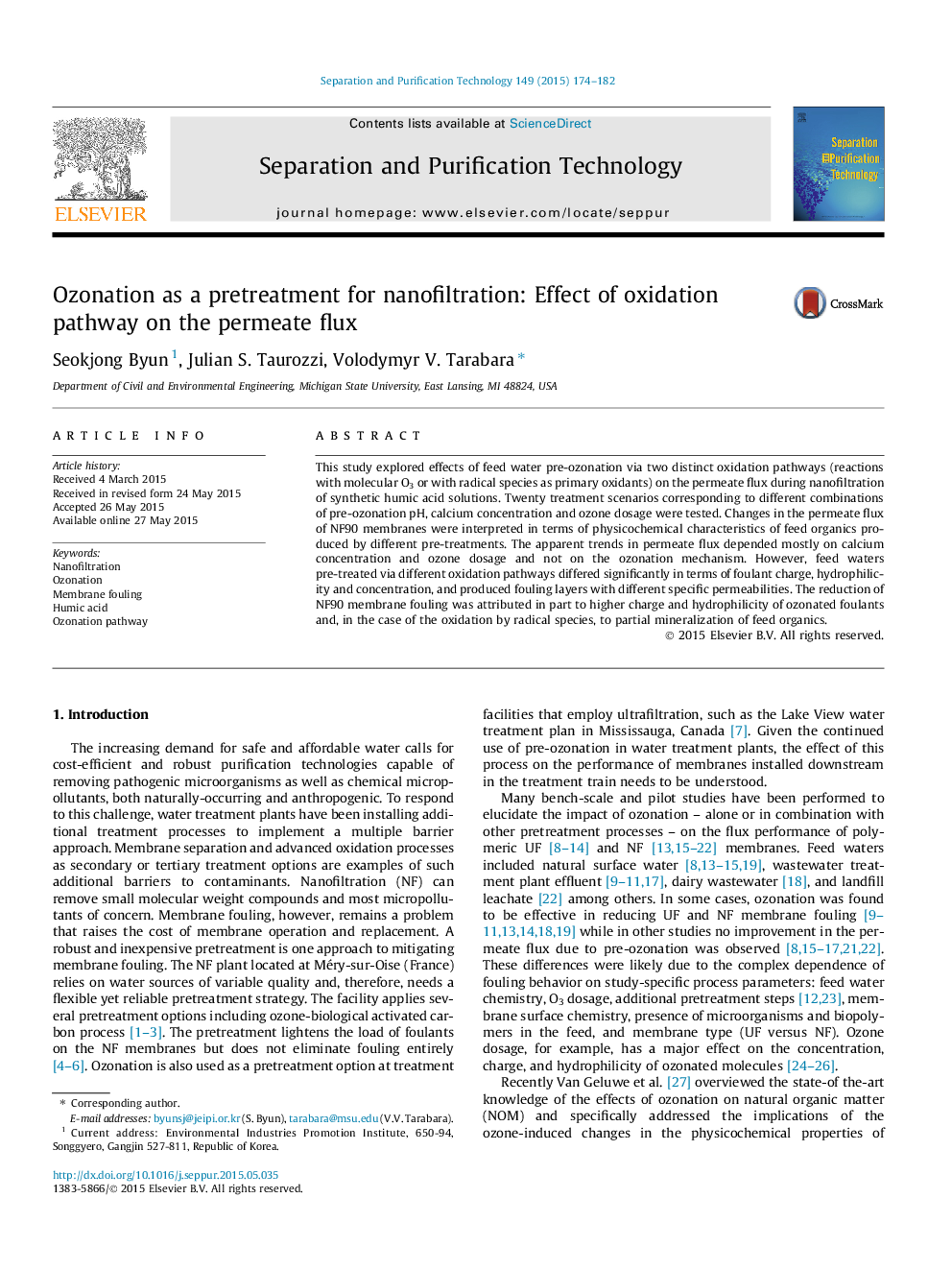| Article ID | Journal | Published Year | Pages | File Type |
|---|---|---|---|---|
| 640579 | Separation and Purification Technology | 2015 | 9 Pages |
•Changes in permeate flux are mostly determined by calcium concentration and ozone dosage.•Oxidation via different oxidation pathways produces waters with different fouling propensities.•Oxidation by radical species leads to significant hydrophilization of humic acid.•Oxidation by radical species reduces foulant load by mineralizing organics.
This study explored effects of feed water pre-ozonation via two distinct oxidation pathways (reactions with molecular O3 or with radical species as primary oxidants) on the permeate flux during nanofiltration of synthetic humic acid solutions. Twenty treatment scenarios corresponding to different combinations of pre-ozonation pH, calcium concentration and ozone dosage were tested. Changes in the permeate flux of NF90 membranes were interpreted in terms of physicochemical characteristics of feed organics produced by different pre-treatments. The apparent trends in permeate flux depended mostly on calcium concentration and ozone dosage and not on the ozonation mechanism. However, feed waters pre-treated via different oxidation pathways differed significantly in terms of foulant charge, hydrophilicity and concentration, and produced fouling layers with different specific permeabilities. The reduction of NF90 membrane fouling was attributed in part to higher charge and hydrophilicity of ozonated foulants and, in the case of the oxidation by radical species, to partial mineralization of feed organics.
